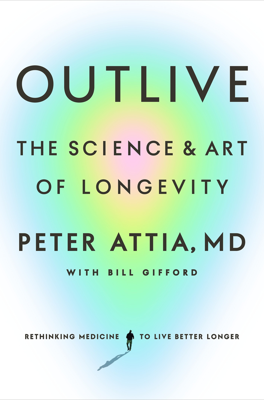Objective, Strategy, Tactics: A Road Map for Reading This Book
The Importance of Long-Term Health Planning
Peter Attia's experiences and observations highlight that the later decades of life often become a "Marginal Decade" for many, characterized by physical and cognitive decline, pain, and a reduction in the quality of life. His aim is to help individuals plan for a "Bonus Decade," where health and functionality are maintained well into the later years of life.
Visualization of Lifespan and Healthspan
Attia uses mathematical models to contrast the typical trajectories of lifespan and healthspan. He suggests that most modern lives follow a trajectory where physical and cognitive health decline in the midlife, exposing individuals to risks and chronic diseases. His proposed optimal trajectory involves maintaining or even improving healthspan well into advanced age, thereby avoiding the typical decline and prolonging life quality.
The Critical Role of Strategy in Longevity
Attia emphasizes the distinction between strategy and tactics in achieving longevity. He refers to Muhammad Ali's boxing strategy as a metaphor to stress the importance of a well-planned strategy to manage the processes of aging effectively. A good strategy identifies the opponent’s weaknesses (in this case, factors leading to age-related decline) and employs tactics that capitalize on one's strengths and opportunities.
Our Strategic Approach to Counter Aging
Recognizing that time is a significant factor against us, similar to an opponent in a fight, Attia explains that a strategic approach is needed to outmaneuver the inevitabilities of aging and the associated risks of chronic diseases. This involves understanding and potentially manipulating the physiological processes that contribute to aging and disease.
The Need for a Tactical Approach Integrated into Daily Life
In Medicine 3.0, tactics are not just interventions applied in response to health problems but are proactive measures integrated into daily routines. These include exercise, nutrition, sleep, emotional health, and the appropriate use of medications and supplements. Each of these tactics plays a critical role in extending healthspan and, consequently, lifespan.
Moving Beyond Evidence-Based to Evidence-Informed Practices
Finally, Attia discusses the limitations of relying solely on randomized clinical trials for developing longevity strategies. Given the complexity of longevity, a combination of different types of evidence—ranging from observational studies on centenarians, animal models, insights from molecular biology, and innovative methods like Mendelian randomization—is essential. This approach allows for an "evidence-informed, risk-adjusted precision medicine" strategy, offering the best chance for individuals to optimize their healthspan and lifespan effectively.
